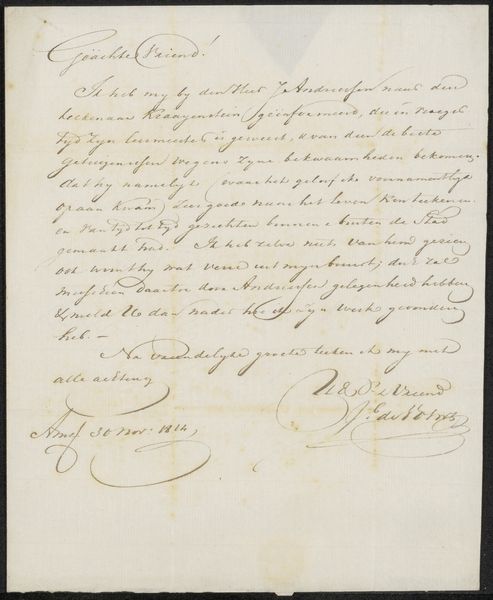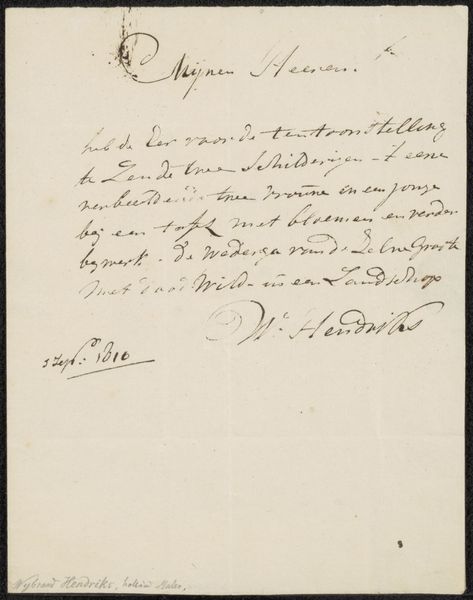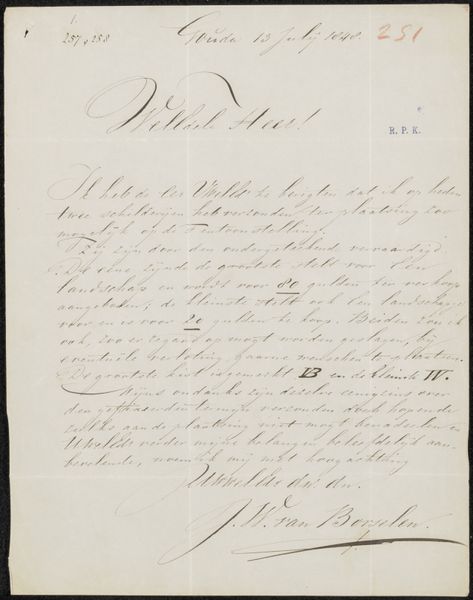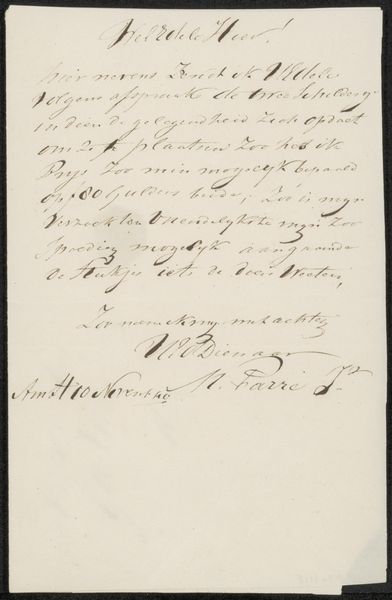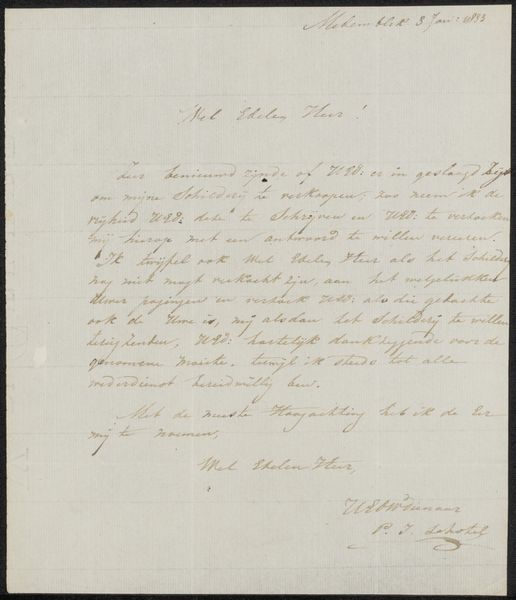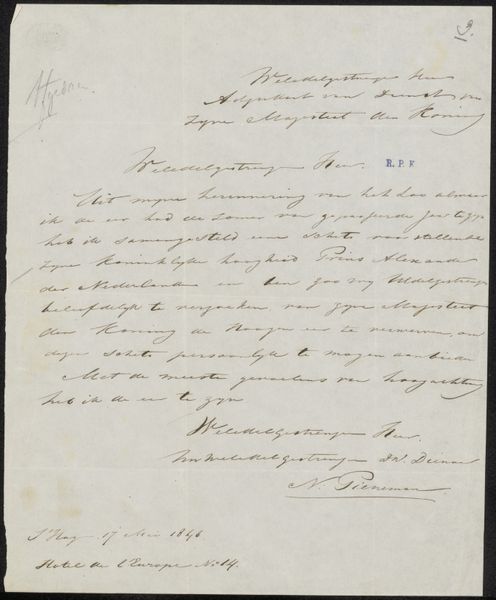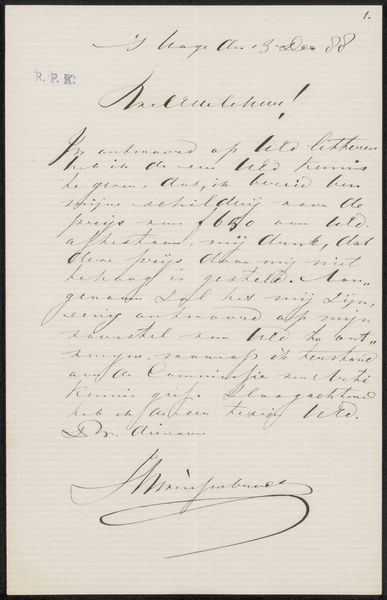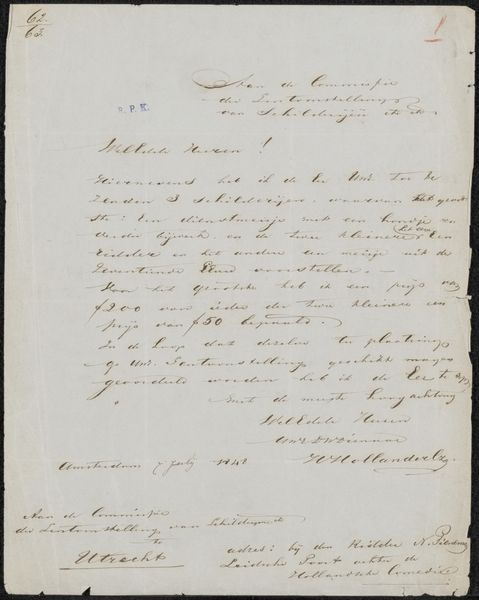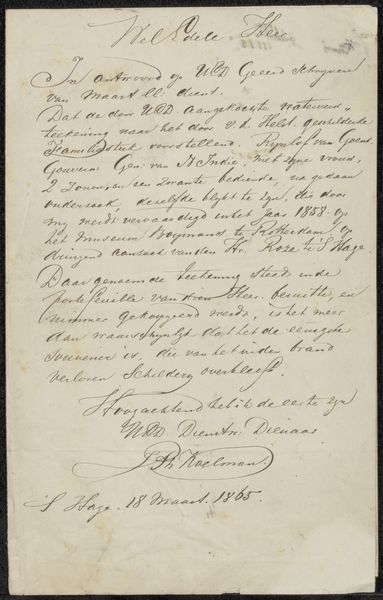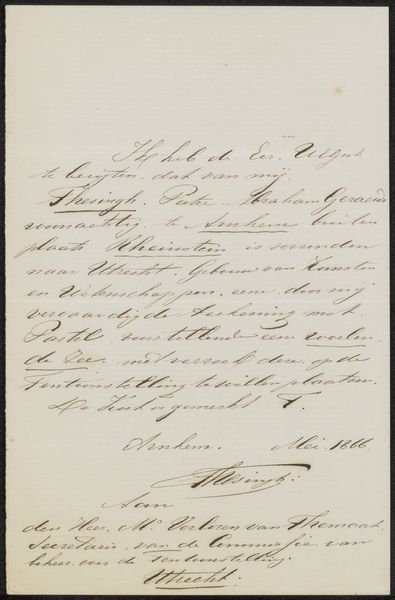
drawing, ink, pen
#
drawing
#
ink drawing
#
pen sketch
#
ink
#
romanticism
#
pen work
#
pen
Copyright: Rijks Museum: Open Domain
Editor: Here we have "Brief aan Christiaan Immerzeel," potentially from 1837, by Raden Saleh. It’s an ink drawing. I am struck by its delicate and personal quality; it feels very intimate to look at someone’s handwriting like this. What meaning do you find embedded within it? Curator: Handwriting itself is a fascinating cultural artifact. Notice the flourishes and careful construction of the letters – they are deliberate. Consider this not just as a practical message but also as a performance of self. What does this particular style of penmanship evoke for you? What social class or time period comes to mind? Editor: It feels very upper-class, refined…almost aristocratic. And I am intrigued that the signature has an underlining flourish. Curator: Precisely! The underlining reinforces this sense of importance, as if Saleh is imbuing his name with authority. Even the language, formal and polite, emphasizes a hierarchical social structure. Also, reflect on the permanence implied by ink; each word carries the weight of intention and long-term preservation. What do you make of that, compared to today's ephemeral digital communications? Editor: That’s true, ink feels very final. There’s an added layer of significance knowing it has survived for centuries. It really highlights the value we place on historical documents, especially from notable figures. Curator: Yes, the choice of ink emphasizes permanence and artistic intent. We're seeing more than just a letter; we are observing the material representation of memory and identity, a powerful statement across time. Editor: This has made me appreciate the act of writing in a completely different light. Thank you!
Comments
No comments
Be the first to comment and join the conversation on the ultimate creative platform.
